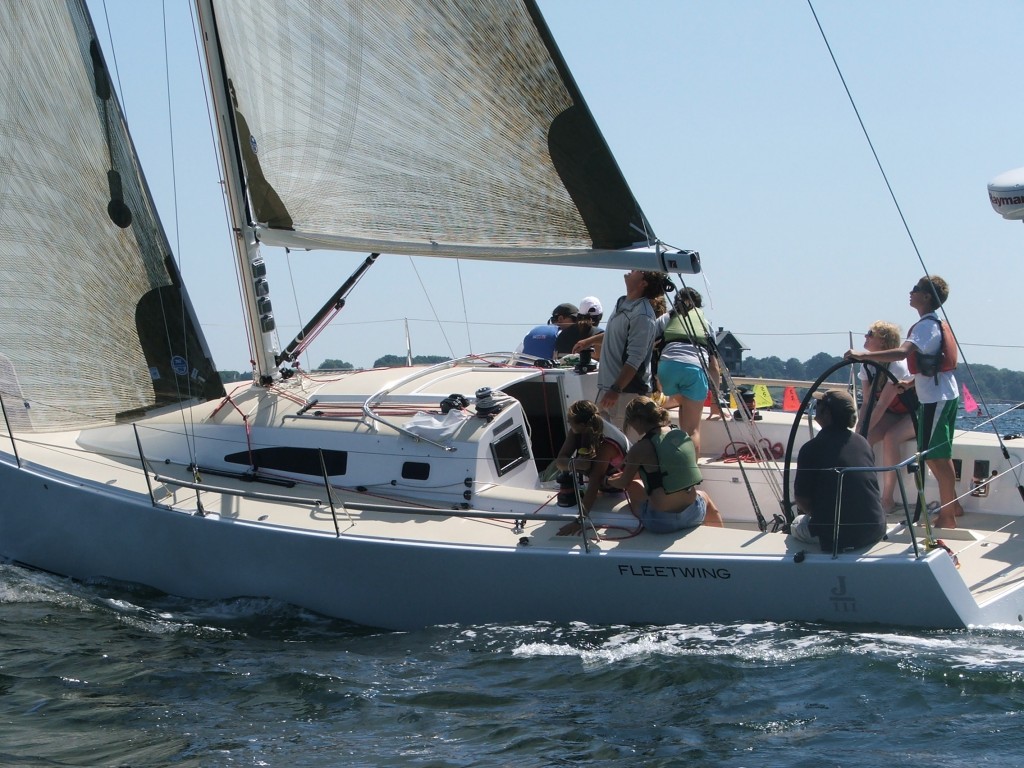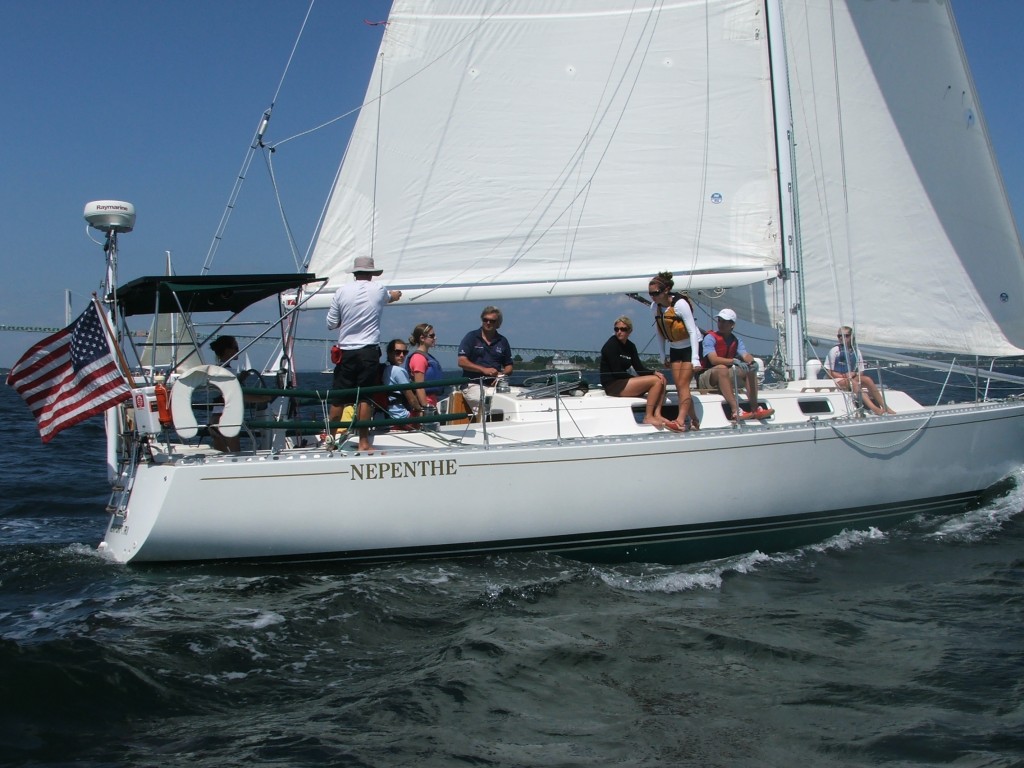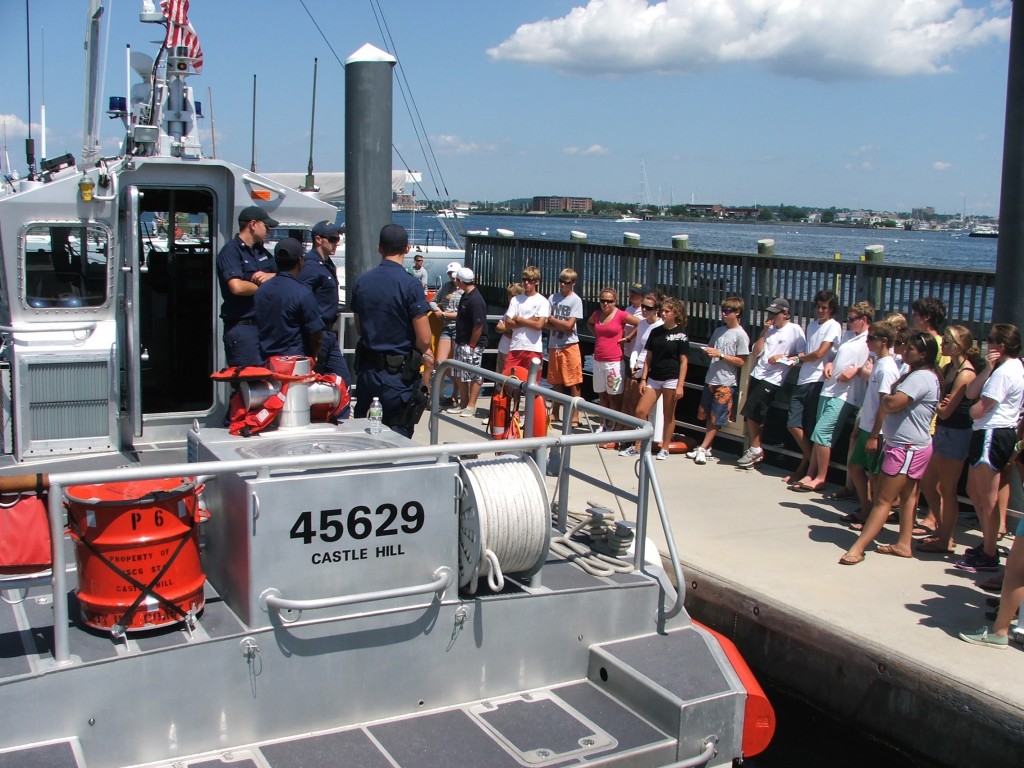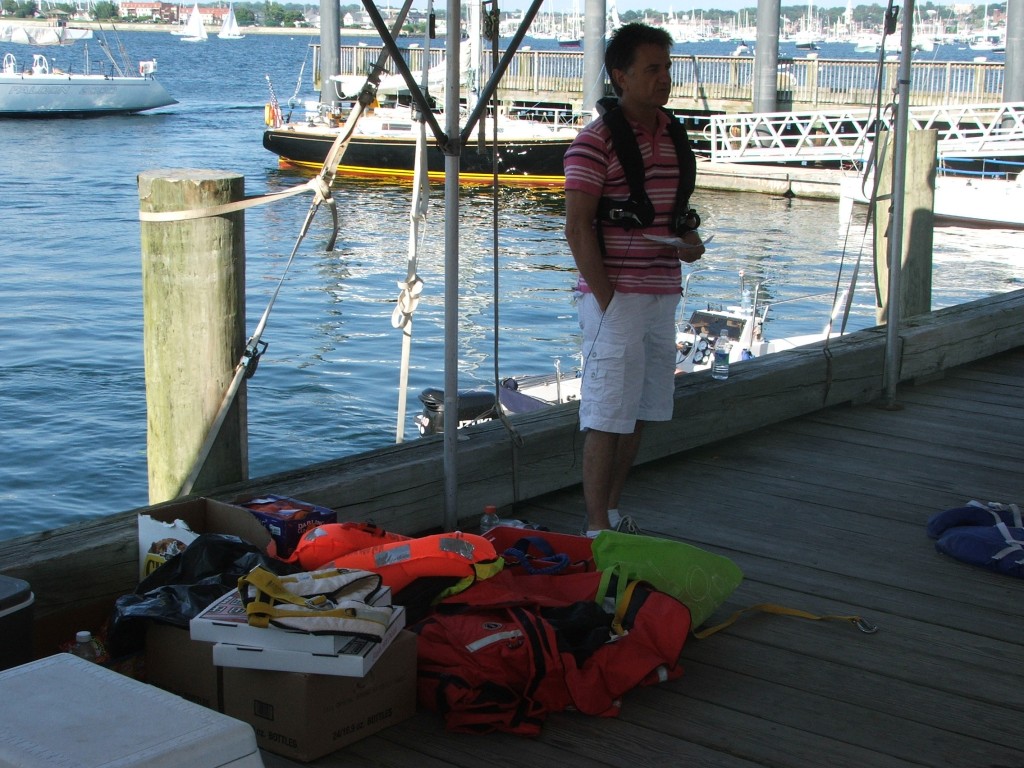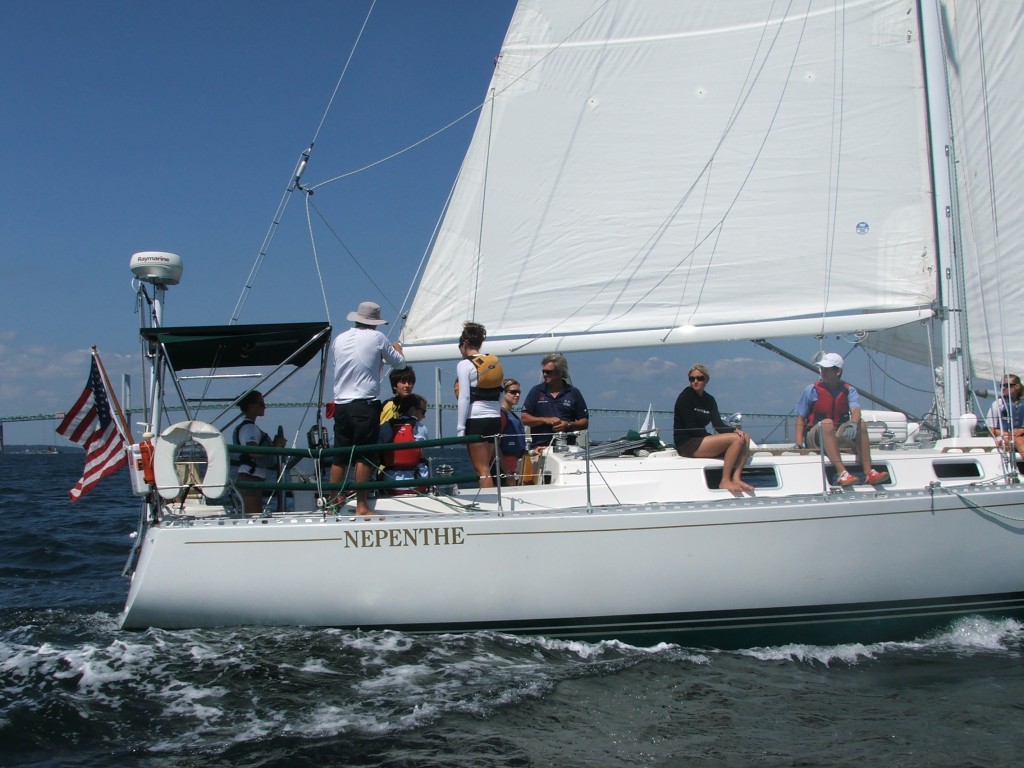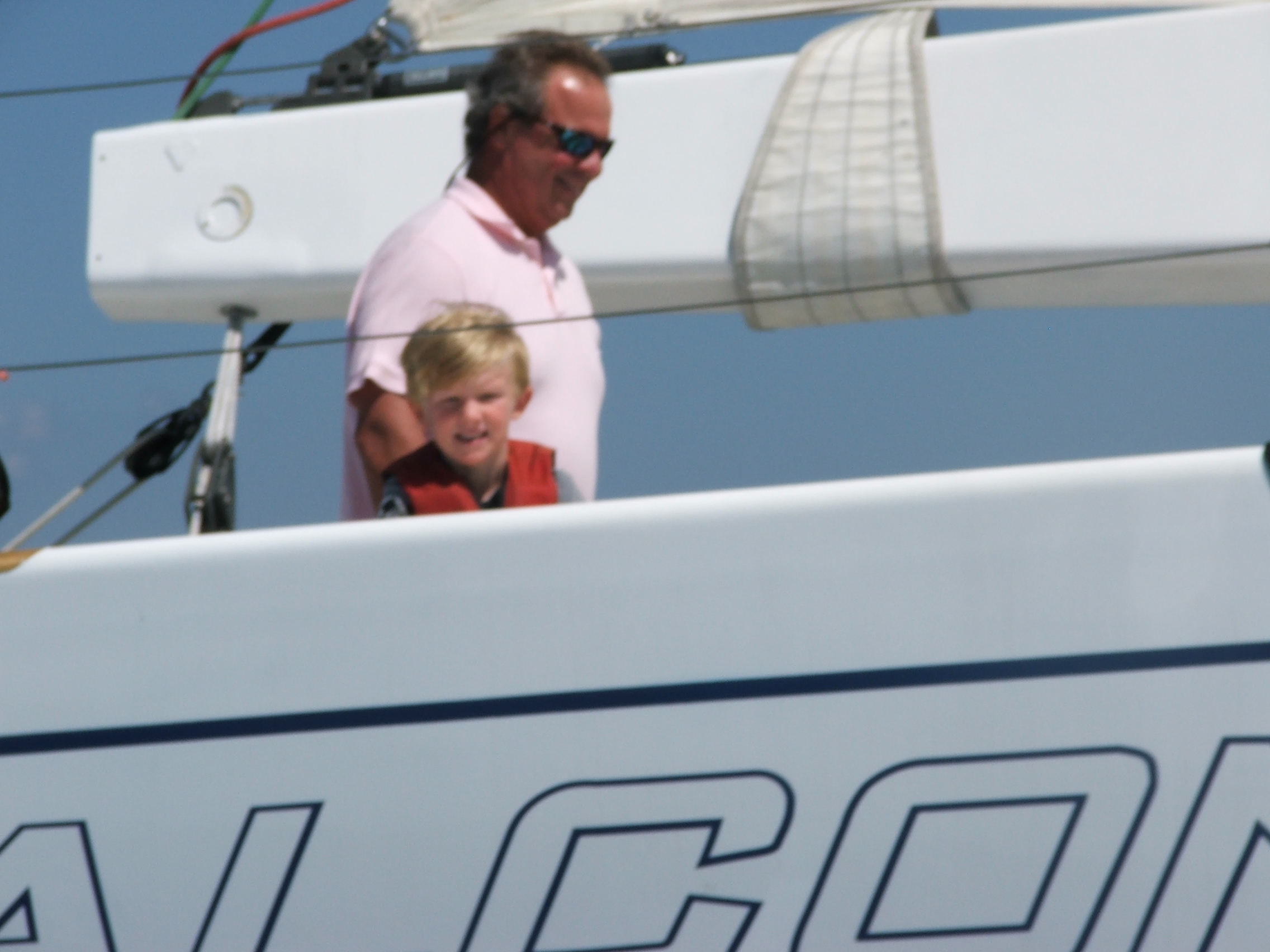The Farr 40 Kaper
It is no news to anyone who has been around sailing boats for more than about 10 minutes that the various skills one learns when being on sail boats, on top of the actual “sailing”, the steering the boat, are vast, deep and readily transferable to other walks of life. Such is just one of the reasons why the US Naval Academy has a pretty developed small boat sailing program.
And by “small boats”, I embrace all of their sailing activities, from the College dinghies, to the learn to sail program they call Beginner Sail Training in Navy 26’s and, for those inclined and with the developed skills, the offshore sailing program. It is from this latter cohort that the Rainy Day Farr 40 Kaper emerged.
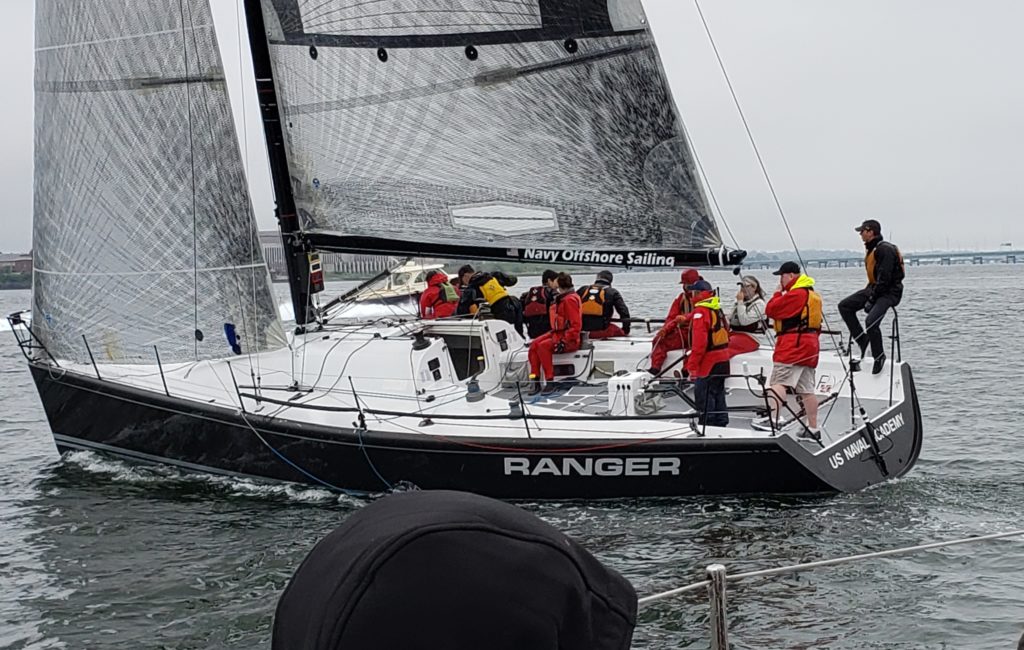
Certainly, we are talking about “The Navy” so it is reasonable to assume that familiarity with boats and the sea is a given. However, the yearly intake of freshman Midshipman has far fewer young people with sailing skills than one might think.
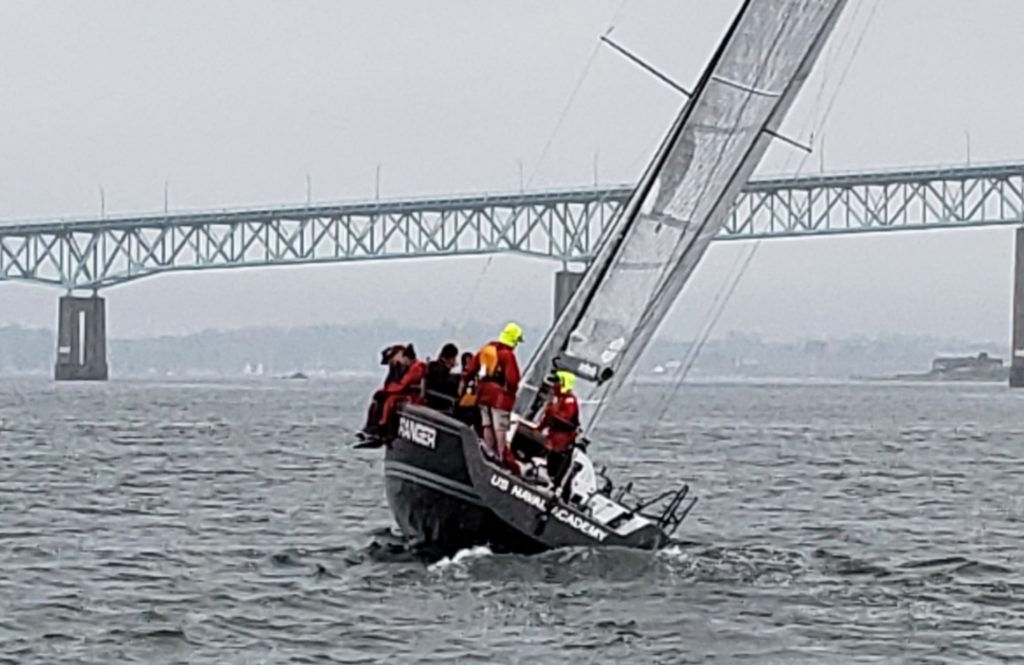
On a Tuesday in June I was with 8 high school sailors from around Rhode Island on the Naval Base in Newport, RI. The goal was to go sailing with some of the Navy Mids. who had just finished racing from Annapolis to Newport a week or so before, aboard two Farr 40’s from the Academy.
This all came about through an email from an old mate of mine, Jahn Tihansky, the Director of the Navy’s Varsity Offshore Sailing Team, VOST, to a number of the members of the Storm Trysail Club involved with the Junior Big Boat Safety at Sea seminars. The gist of the note was, “We will be in town with two offshore boats and 18 Mids., is there something we can do?” Something we can do” was quickly translated by me and Jahn into being some mentoring time on the Farr 40’s, wth the Mids. with some high school sailors from around RI.
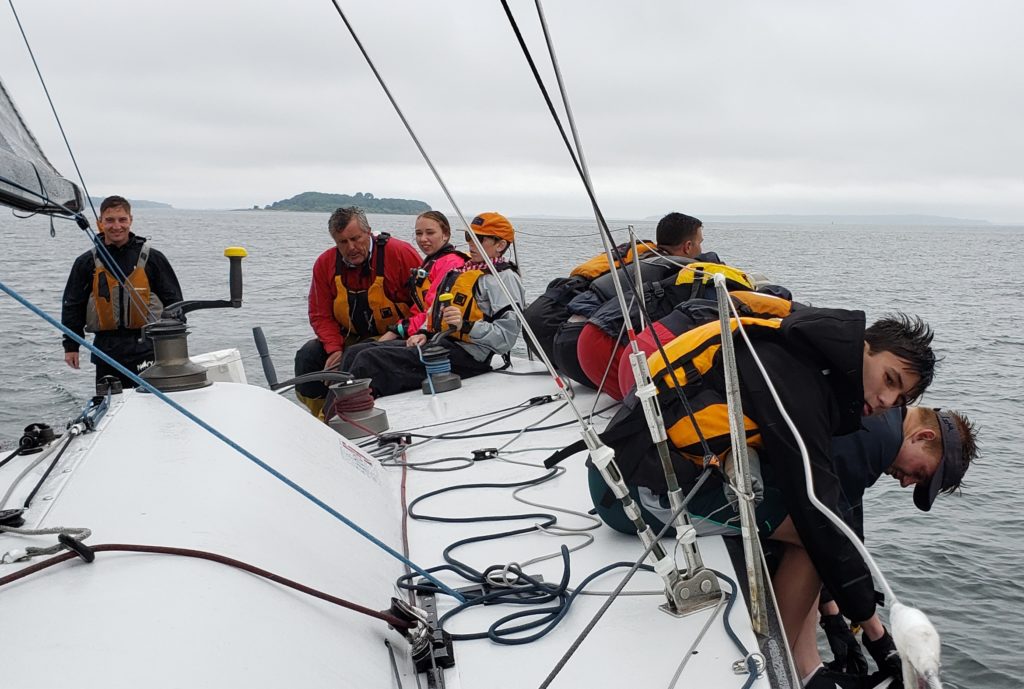
As with many, more or less, off the cuff ideas, this one came together pretty easily and quickly.
I coach the Prout School Sailing Team and I am also the RI rep to NESSA, the North east region’s organizing authority for high school sailing. As such I have the other RI high school coaches in their own email distribution list. This list, plus the participant list (15 teenagers) from the recently completed S.T. Foundations Jr. SAS at Sail Newport, in Ft. Adams, along with my own team’s sailor and parent lists and a few misc. kids I know, gave me a pretty wide net with which to advertise such an opportunity to. The net result was we had 8 HS sailors on two of the Navy’s VOST Farr 40’s for close to 4 hours. The pictures in this post were taken on this day. There were a number of interesting elements involved with this Kaper over and above “just sailing” and I was able to articulate my vision for the day at the planning meeting Jahn conducted prior to boarding.
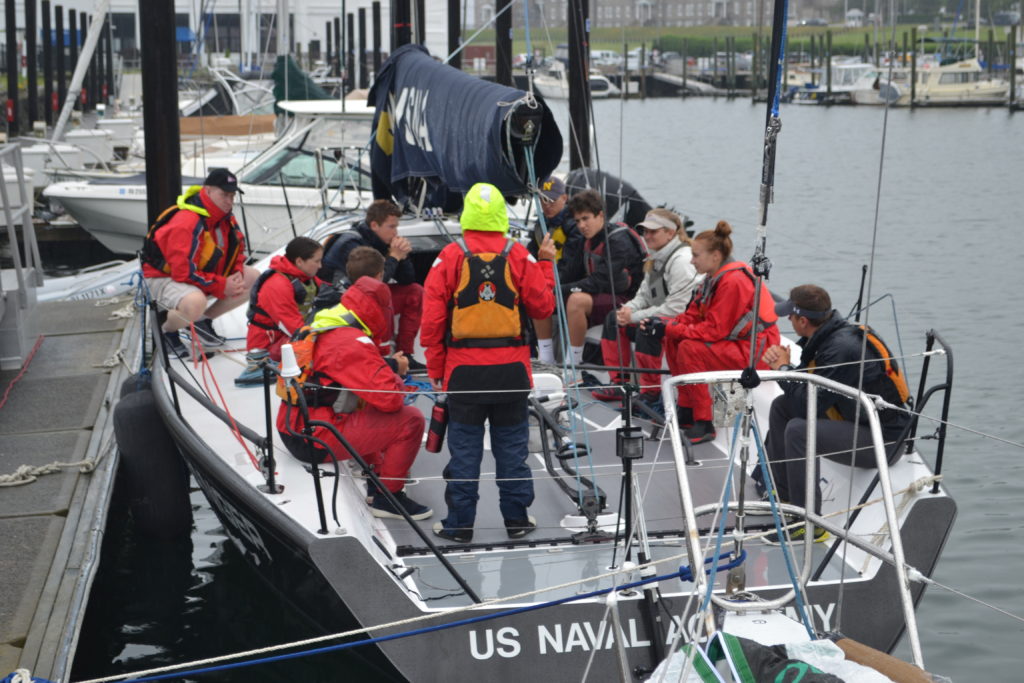
Jahn introduced himself and his fellow coach from the Academy, the highly lettered Nancy Haberland, a three-time Olympian, holder of 18 National and 7 World championships and who has been a coach at the Academy for 15 years.
The third coach, Brad Donnelly, is the current HS coach for the Rogers HS Sailing Team in Newport and is, as it turns out, a soon to be retired Commander in the US Navy and whose current day job is as a lecturer at the Naval War College, on whose grounds we were standing. I was the fourth coach.
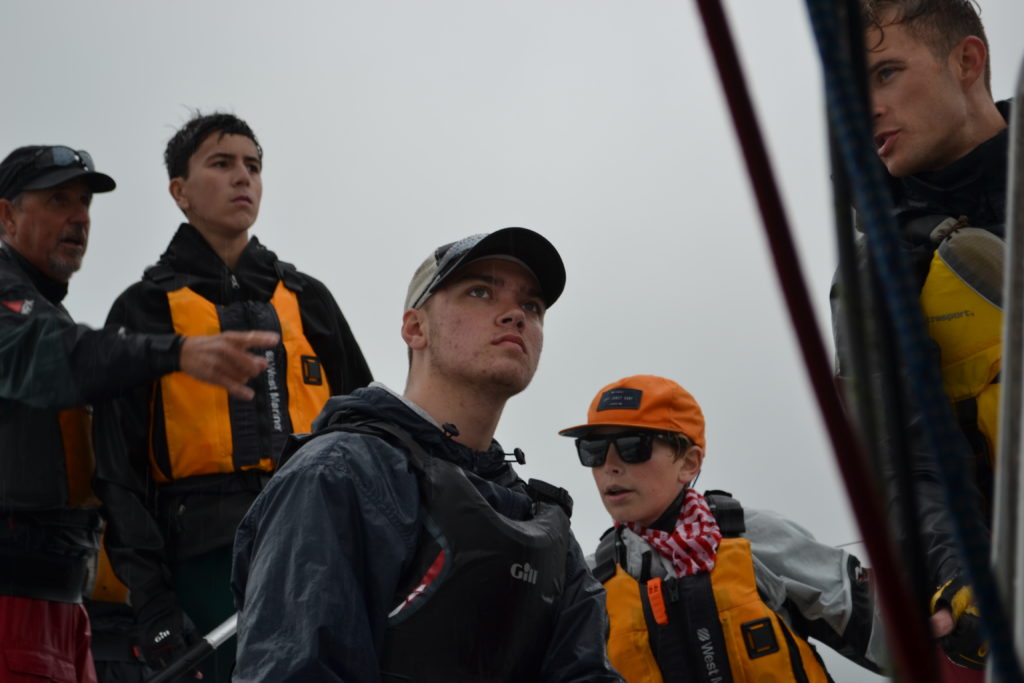
Jahn asked the HS sailors for a quick bio of themselves and sailing experience and then for me to paint a picture for the sailors of the goals of the day. The broad brush of the day had been developed over a dinner Jahn and I had the previous week. The idea I had was this. Here are two groups of young sailors, with not many years between them.
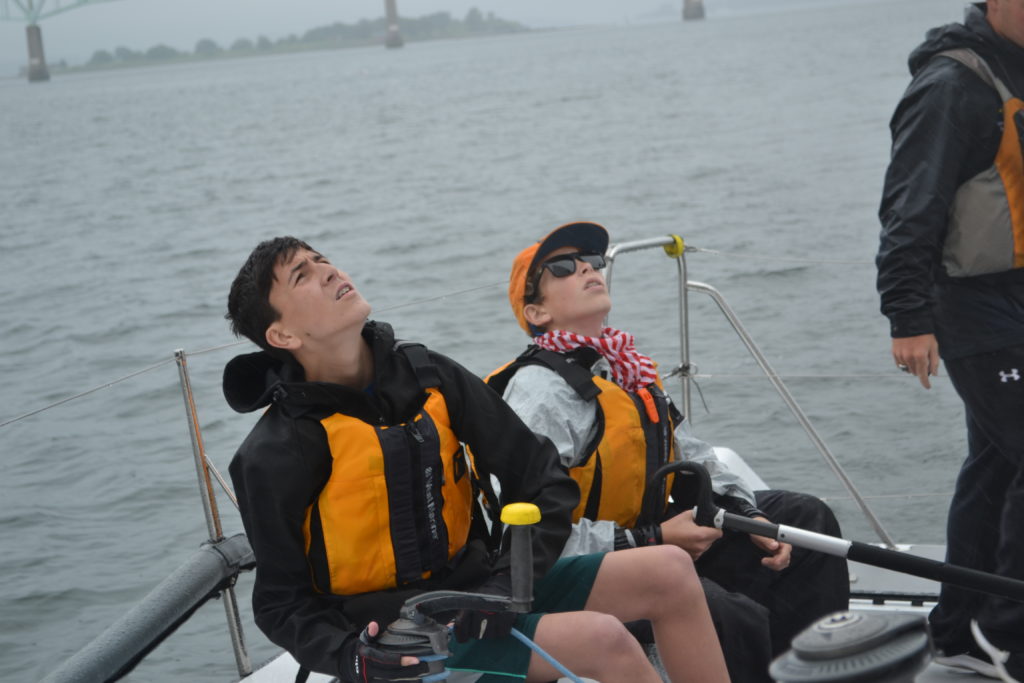
The high school sailors are relatively new to the world of sailing having had the bulk of their exposure in the H.S. 420 & FJ dinghy environment. The Navy Mids were in fact only just a couple of years ahead of the HS sailors as was discovered when Jahn asked the Mids., “how many of you sailed before coming to the Academy”, to which the answer was perhaps one with some background. The Mids. had of course been exposed to the world of sailing, or at least the idea of the sea, for the past however many years they had been at the Academy.
Leadership is possibly the one human characteristic valued above all others in the Navy and for good reason. Leadership is what got Bligh and his loyalists 35-hundred some miles across the Pacific in one of the superior epic small boat voyages on record.
I proposed that the goal for the day have two critical components:
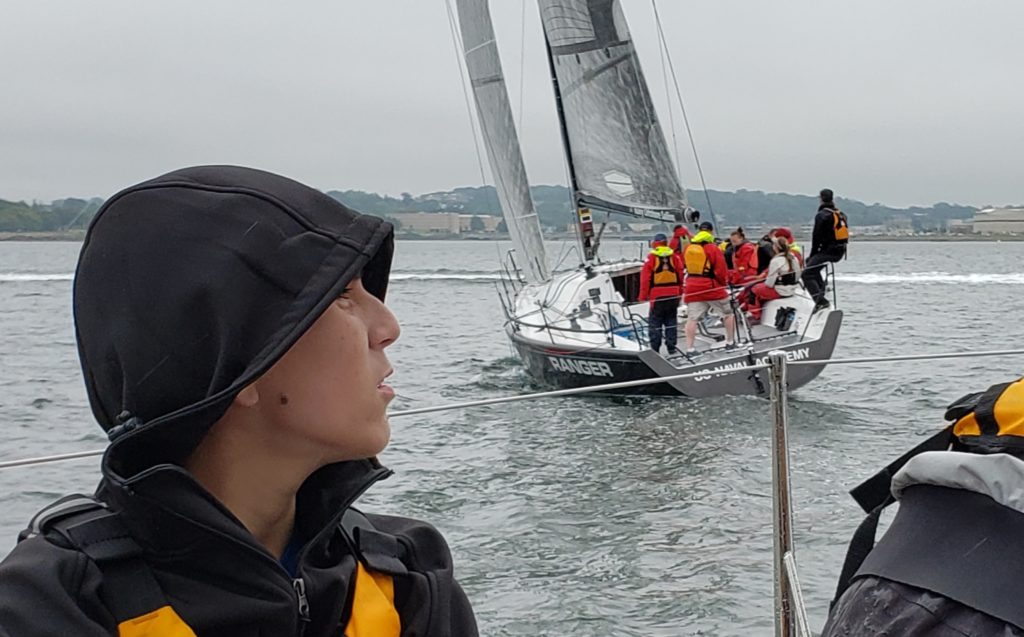
The Mids. would practice their leadership, communications and instructive skills with the HS sailors.
And the HS sailors would learn some of the broad-brush skills needed to sail big boats.
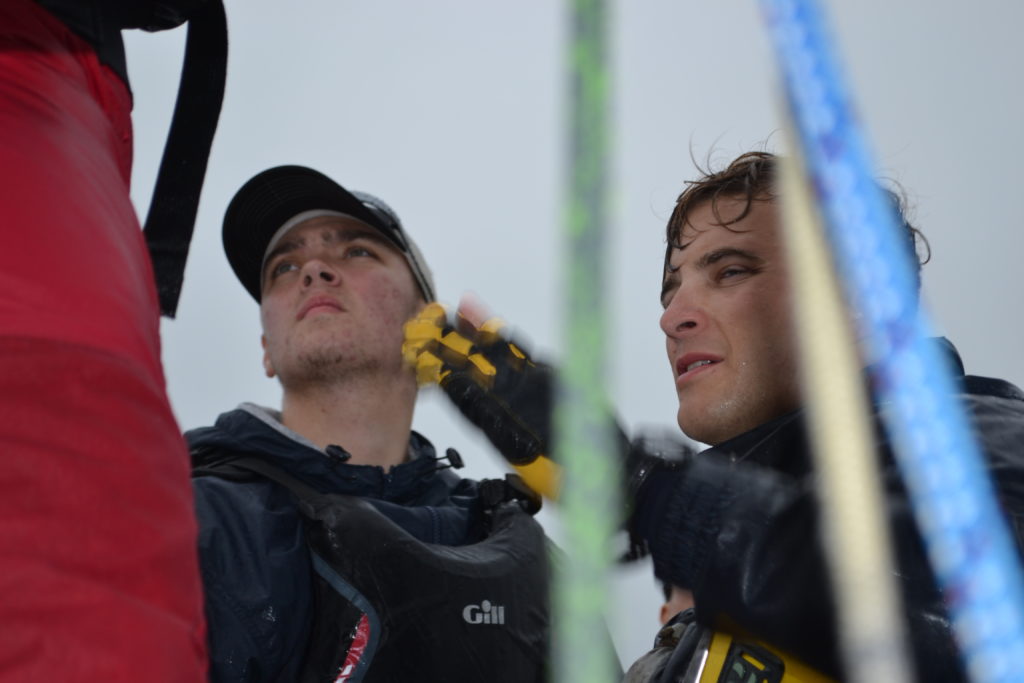
We then divided the 8 HS sailors into two groups and assigned them a boat. With that we moved to the boats. Each boat has a Skipper and of course all of the roles are assigned as is normal for any similar racing yacht. Trimmers, bow, mast, pit, nav. etc.
On board our boat, I allocated the four HS sailors to one of four areas: bow, mast/pit, trim and steer and to work with and under the eye of, the corresponding Mid. With that we proceeded to sea.
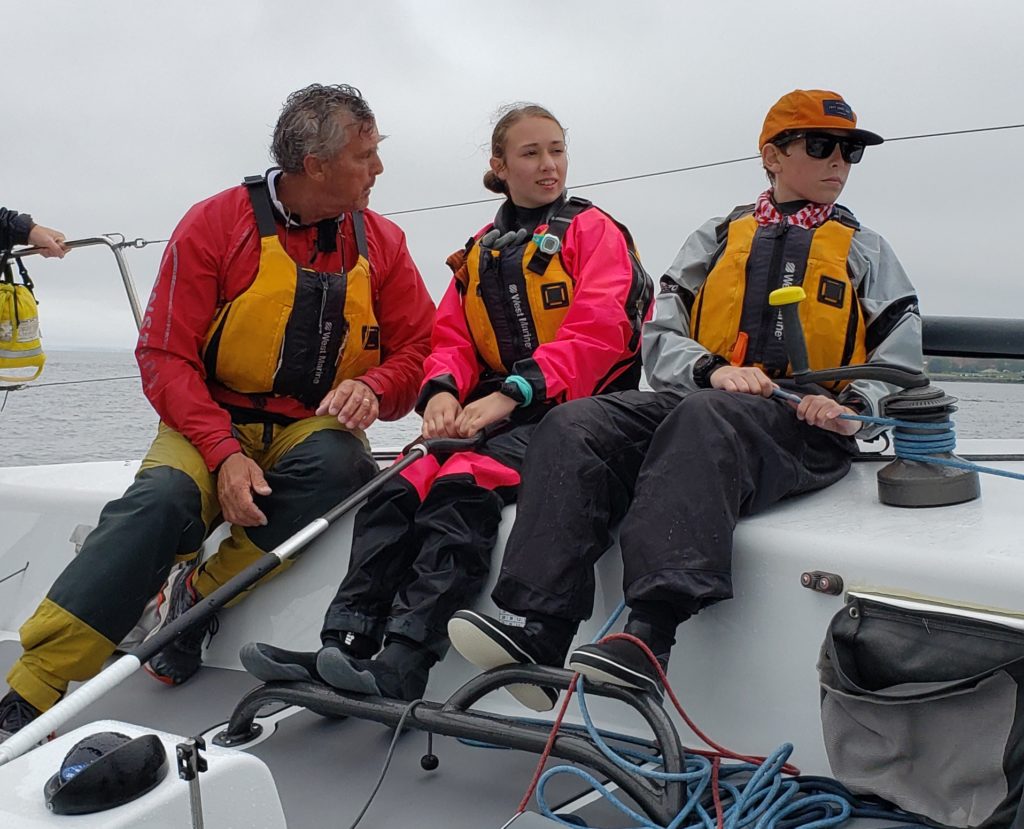
Well, Narragansett Bay north of the Bridge, just off the War College in fact. Along the way we pointed out the local Navigation marks and their implications, set the mainsail, instructing the Padawans on the minutiae of tailing a line, getting turns onto a winch while tailing, use of a winch handle, leading the halyards with snatch blocks across the hatch-the main halyard on a Farr 40 exits the spar below decks and must be led on deck to be tensioned on a winch. The uses of the backstay hydraulics, double ended “German” style mainsheet, boom vang, working traveler and other sail controls, may of which are on the 420’s, but in the Farr of course have more load & so purchase and many of which exit a central pod in the middle of the cockpit floor and are much more aggressively used when sailing.
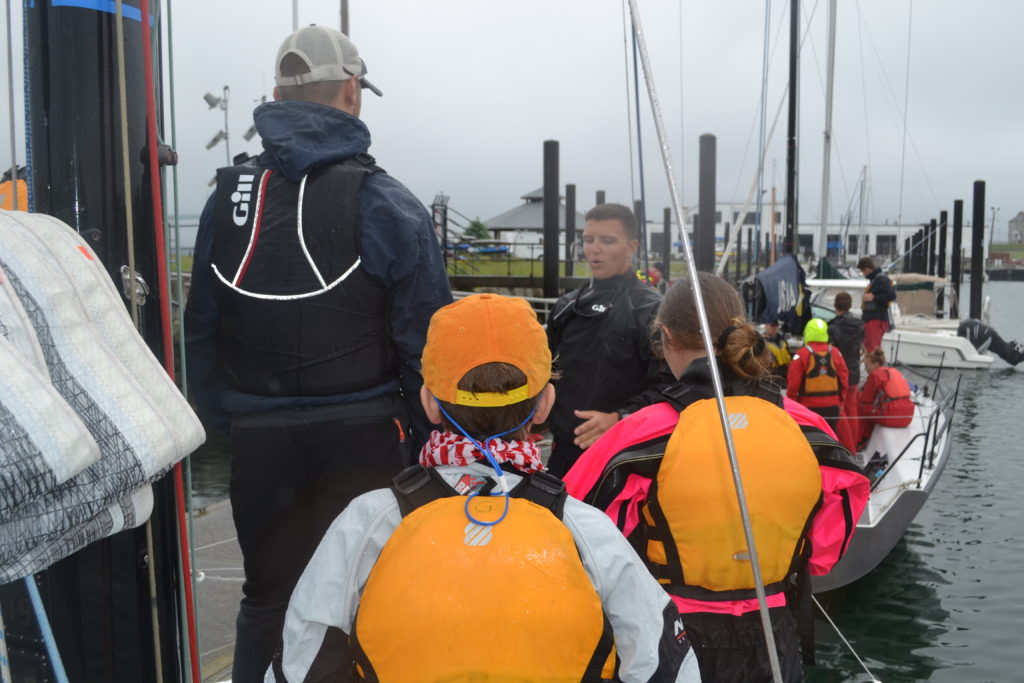
After a few bare headed tacks and gybe, we set a Jib and went up wind. Intruction was given of the importance of the communication back and forth from the bow to stern and the key role the mast-man has in facilitating such communications. After a few tacks and gybes with two sails during which time the Mids. in the relative areas had been covering the pleasures of the Dip Pole Gybe, we set a kite, pretty cleanly as it turned out and headed across to the Jamestown shore in the 5,7 knots of Easterly.
Navy sailors in charge of each area were constantly showing, explaining and watching their opposite HS number in the execution of any particular task in any evolution.
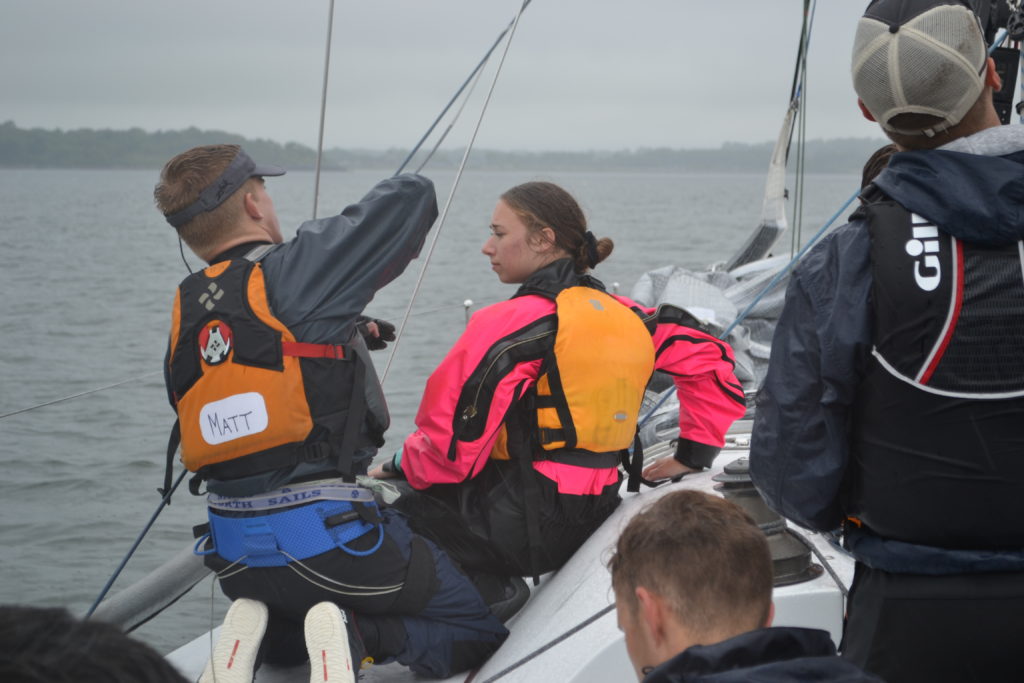
We had HS sailors trimming main, steering, handling the jib and kite sheets and guys and working the bow. Jahn and I would be moving back and forth, chiming in when we felt necessary as would the two senior Navy sailors including Zach, seen below, holding onto the backstay, the boat’s skipper.
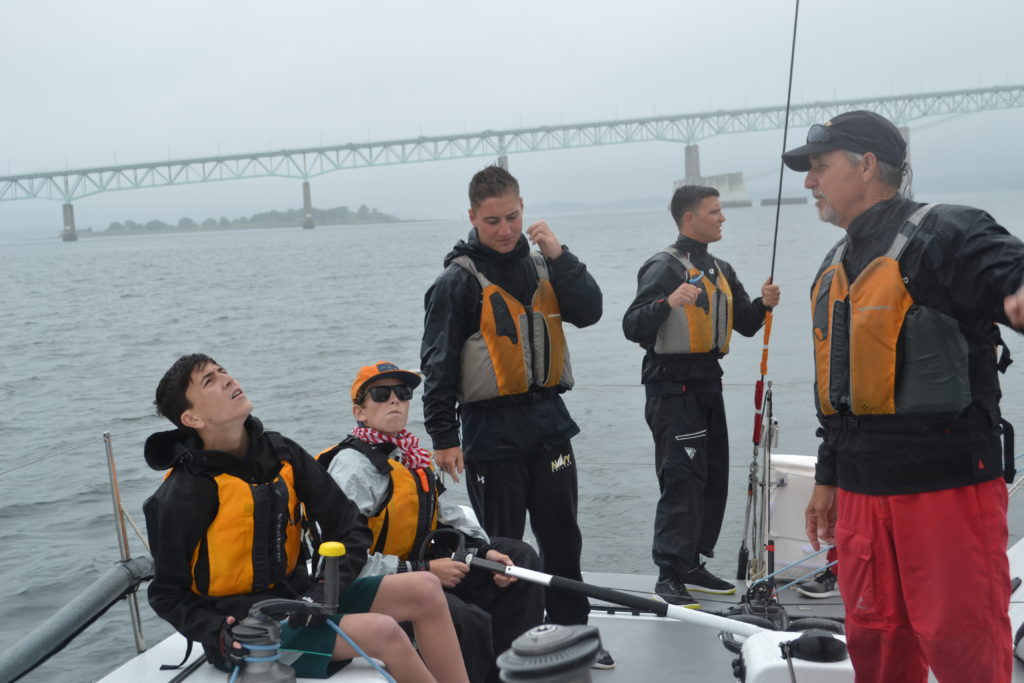
Sailing with performance meters was a first for the HS sailors when steering and as might be expected they mostly sailed by the angle of heel and pressure, a theme Jahn and I were close by to reinforce pretty regularly.
Adjustable Jib leads and a backstay were two control tools the HS sailors were introduced to, and the look and expressions of amazement at the change in shape of the main and the feel of the tiller, when the backstay was applied or eased was a sure sign the lessons were hitting home.
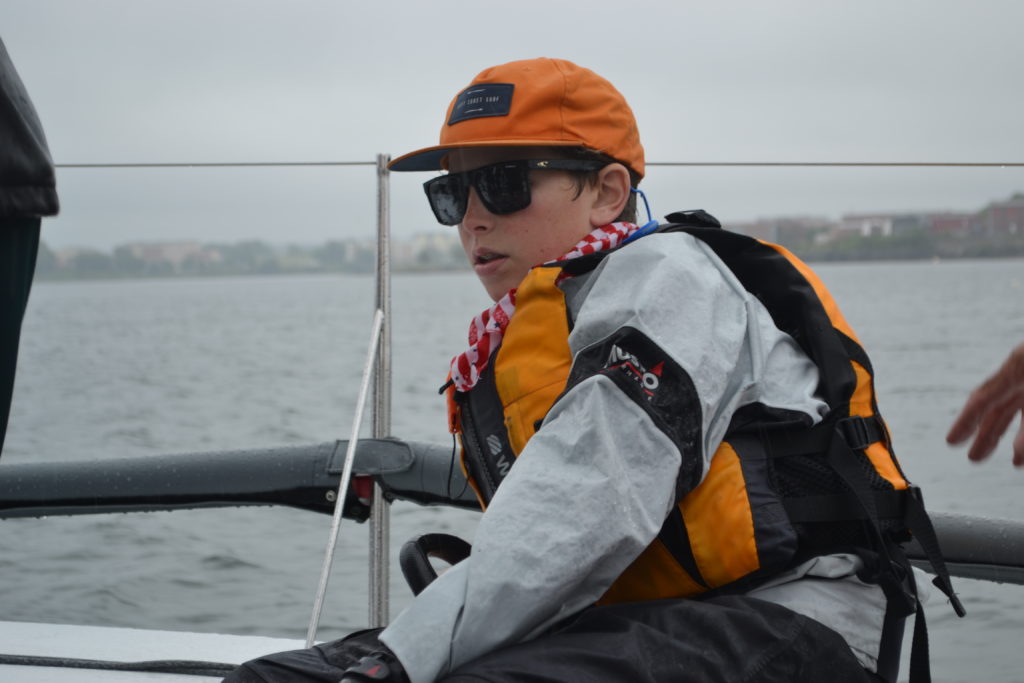
During the course of the afternoon we were able to rotate three HS sailors thru steering and two thru the mainsheet trimmers role.
Richie, one of the (soon to be a Sophomore) Prout sailors who had been working in the pit, jib trim, after guy, middle of the boat area, sailed with me for the Tuesday evening been can racing, later that afternoon on a 40 footer I had introduced him to, along with another young sailor from the recent Jr SAS, and it was very gratifying to see just how far Richie, in particular, had come in just a few weeks since the SAS.
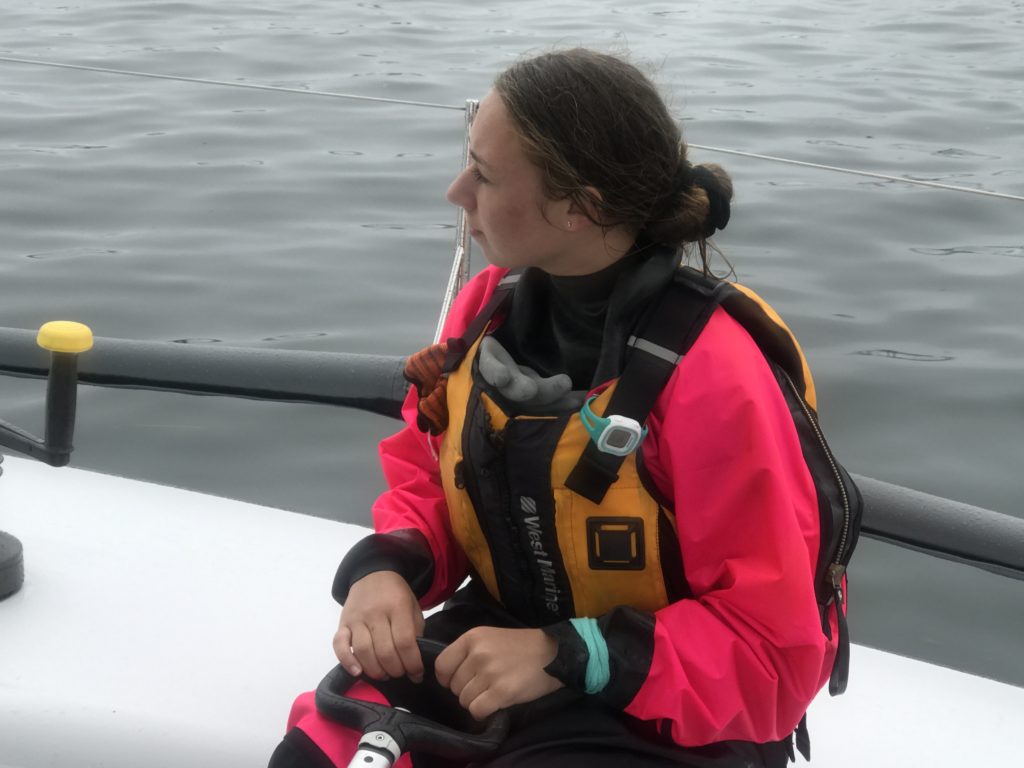
The opportunity to sail with Midshipman from the US Naval Academy is a special treat unlikely to be widely available to other high school sailors around the country and so not a particularly good template for duplication. Although JAn did tell me they try and do “this” any where they go on thier summer sailing seasons. But Navy boats or not, there is no reason at all why such an instructive afternoon of mentoring and training cannot be undertaken anywhere there are keel boats, High School sailors and owners and crews interested in developing young sailors.
Apart from the pretty obvious aspect of self-interest such efforts present to willing owner’s, by way of keeping the potential roster of future crew topped up, working with such interested and engaged young people is one of THE most rewarding activities I have done and do and will continue to do.
One last side bar.
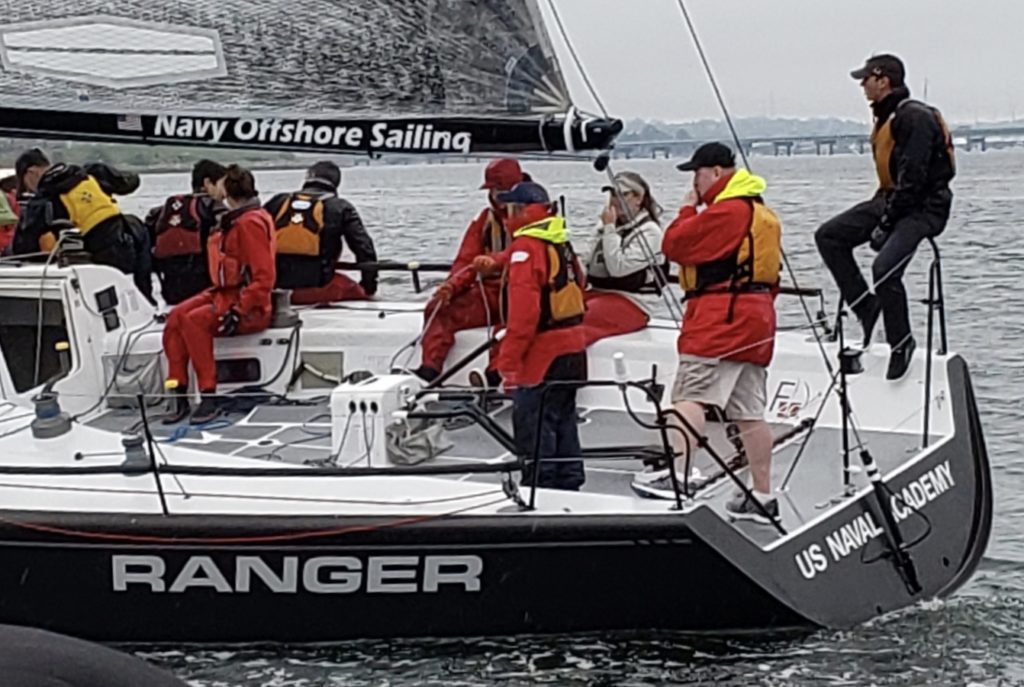
I am also involved with the Young American Sailing Academy, the outgrowth of the Young American Sailing Team that so successfully completed in the 2016 Newport to Bermuda Race. Based in Rye NY, this group is into its third class of developing high school sailors into big boat sailors. One of the young sailors who come up from New York to the Farr 40 Kaper is a graduate of the YASA program, including the 2016 Bermuda Race and with whom I have sailed with in several races. She is one of the most buttoned-up young people you could ever meet and so it is no surprise she has been accepted to the US Naval Academy and will be heading down there mid-July. I will miss her as a person and friend, and certainly the fun of sailing with her, but my loss is a big gain, in my estimation, for the US Navy and their VOST program and so for the country in the larger picture.
Bon Voyage Maddy.


